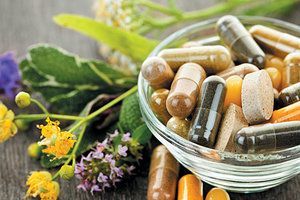New York's highest court of appeals has held that no-fault insurers cannot deny no-fault benefits where they unilaterally determine that a provider has committed misconduct based upon alleged fraudulent conduct. The Court held that this authority belongs solely to state regulators, specifically New York's Board of Regents, which oversees professional licensing and discipline. This follows a similar recent ruling in Florida reported in this publication.
Strategies for Natural Joint Health
With the barrage of supplements available today, choosing a safe and effective product to address joint health issues can be anything but straight forward for consumers and health practitioners alike.
Many patients suffering from complaints from joint pain to stiffness and lack of mobility have tried a variety of options without finding a reliable, long-term strategy for relief. And while the word is getting out about the dangers of pharmaceutical options for pain relief, from the increased risk of ulcers to cardiovascular and kidney complications, the world of natural alternatives still largely remains a quagmire of products with widely varying results beyond placebo.
So the questions arise: is a 50/50 shot at relief good enough for you? How, as consumers or practitioners, can we forage through the weeds and effectively assess or recommend options that work?
Joint Pain 101 – Why Do Joints Hurt?

Joint pain can arise because of a variety of reasons and assessing the cause of a patient's discomfort is a key factor in determining the right treatment option.
Stiff, painful joints caused by physical wear and tear due to movement, sports, injuries and/or aging is due to cartilage degradation resulting from physical friction and strain on the joint and can lead to osteoarthritis (OA). Cartilage breakdown can cause painful bony spurs or extra bone formation around the joint, triggering the connective tissue (for example, ligaments) and muscles around the joint to stiffen and become weaker over time. Although OA is the most common, other forms of arthritis such as rheumatoid arthritis and gout are also prevalent and need to be considered when determining sources of joint pain.
However, don't be fooled into thinking arthritis is the only cause for stiff or painful joints; the fact is that our lives today are riddled with joint pain-inducing influences. Research suggests that the abundance of saturated fat, refined sugars and starches, salt, dairy, caffeine, red meat and even some vegetables (for example, tomatoes, peppers and eggplant from the nightshade family) in our diets can worsen arthritic conditions.
The combined inflammatory effect of our sedentary lives with consuming a high-calorie diet deficient in essential nutrients such as omega-3 fats; minerals including calcium, magnesium, selenium, zinc and copper; vitamins such as vitamin C, vitamin D and vitamin K is a major instigator of bone and joint health issues today.
Stress is a major contributor to pain in the body, as it activates specific biochemical pathways that signal a chronic inflammatory response if left unchecked. Exposure to environmental toxins plays a role in elevating body's overall inflammatory burden and can increase symptoms of existing joint conditions.
While both categories of joint supplements can be effective, keeping the various causes of joint pain in mind enables consumers and practitioners to target which type of supplementation may provide the most effective relief for each individual situation.
Natural Anti-inflammatory Ingredients
If we envision joint building ingredients as building blocks, it's not hard to imagine inflammation as the deleterious force of a fire that continually burns as you build a house. Inflammation calmers are ingredients that naturally reduce the inflammatory response in the joints. Some anti-inflammatory benefits can also be seen within the joint building category; however, persistent inflammation caused by injury, disease and/or lifestyle factors can overwhelm the system and diminish the benefits of joint building supplements. One of the key dietary anti-inflammatories are omega-3 essential fatty acids (EFAs), including eicosapentanoic acid (EPA) and docosahexanoic acid (DHA) from fish oils, and alpha-linolenic acid (ALA) from plant sources such as flaxseeds. Most North American diets are deficient in omega-3s, causing an imbalance between omega-6 and omega-3 EFAs and increasing the risk of pain, inflammation and chronic disease. Supplementation with EPA and DHA, on their own or in combination with vitamins D and E, offers significant benefits not just in relieving joint pain and stiffness but also markers of systemic inflammation such as C-reactive protein (CRP) and has therapeutic benefits in many inflammatory conditions ranging from cardiovascular disease to inflammatory bowel disease, asthma, multiple sclerosis and psoriasis.
As discussed, deficiencies in certain vitamins and minerals are related to the deterioration of cartilage health and can lead to painful and inflamed joints. To make up for a lack of these important nutrients in the diet, another inflammation calming option is to supplement with minerals such as calcium, magnesium, zinc and selenium, most commonly with vitamin D (which enhances calcium and magnesium absorption). Choosing a unique, silicate mineral complex containing a wide spectrum of minerals, such as products derived from the Sierra Mountains, is also a great option. A key benefit of this type of mineral complex is the relatively short duration before results are seen compared to other ingredients which require longer, continuous use to see benefits, such as some joint builders.
Many herbal ingredients and spices also offer anti-inflammatory properties. Extracts from spices like turmeric and ginger and botanical ingredients such as ashwaganda, boswellia and maritime pine all possess potent benefits in combating joint pain and inflammation due to their antioxidant and anti-inflammatory phytochemical components. The specifics of how these botanical ingredients work is far less important than their significant benefits on reducing the overall inflammatory burden of the body, which translate into tangible therapeutic benefits for OA sufferers.
Endogenous Cartilage Components
Providing the body with components that make up cartilage is another strategy that has demonstrated some effectiveness in certain individuals suffering from joint pain.
Ingredients that fall into this "joint building" category of natural supplements include the two best-known natural ingredients glucosamine and chondroitin, as well as type-2 collagen and hyaluronic acid. These joint building ingredients are naturally manufactured by the body on its own in order to maintain joint health in normal physiological conditions; however their endogenous production may be insufficient to maintain optimal joint health in damaged cartilage.
Glucosamine is an amino sugar which serves as a precursor for joint cartilage components called glysaminoglycans (GAGs). Often used in combination with glucosamine due to its complementary mechanism, chondroitin is a sulfated GAG that helps cartilage to retain water, thereby cushioning the joints. Also, falling into the GAG category, hyaluronic acid (HA) has also been used as an effective "joint builder."
Despite transcending from its original injectable dosage form into oral supplements and retaining some efficacy in relieving OA symptoms, many still believe the usefulness of HA is more suited for cosmetic purposes than joint health.
Type-2 collagen supplementation (derived from chicken combs) also presents a natural option for relieving pain and inflammation caused by arthritis.
Despite its lesser known status, one trial using a patented type-2 collagen ingredient demonstrated a more significant benefit in improving joint comfort, flexibility and mobility than a glucosamine/chondroitin mixture.
A Complex Process, Simplified
Joint pain stems from a variety of factors and cannot be viewed as a simplistic process, nor treated with a simplistic approach.
Whether you are an arthritis sufferer or a practitioner trying to assist your patients in finding an effective treatment option, keeping the various causes of joint pain in mind, and using a combination approach including lifestyle modifications and targeted supplementation, can greatly assist you in determining the best course of action and get you to the winning side of 50/50 to achieving symptom relief.



